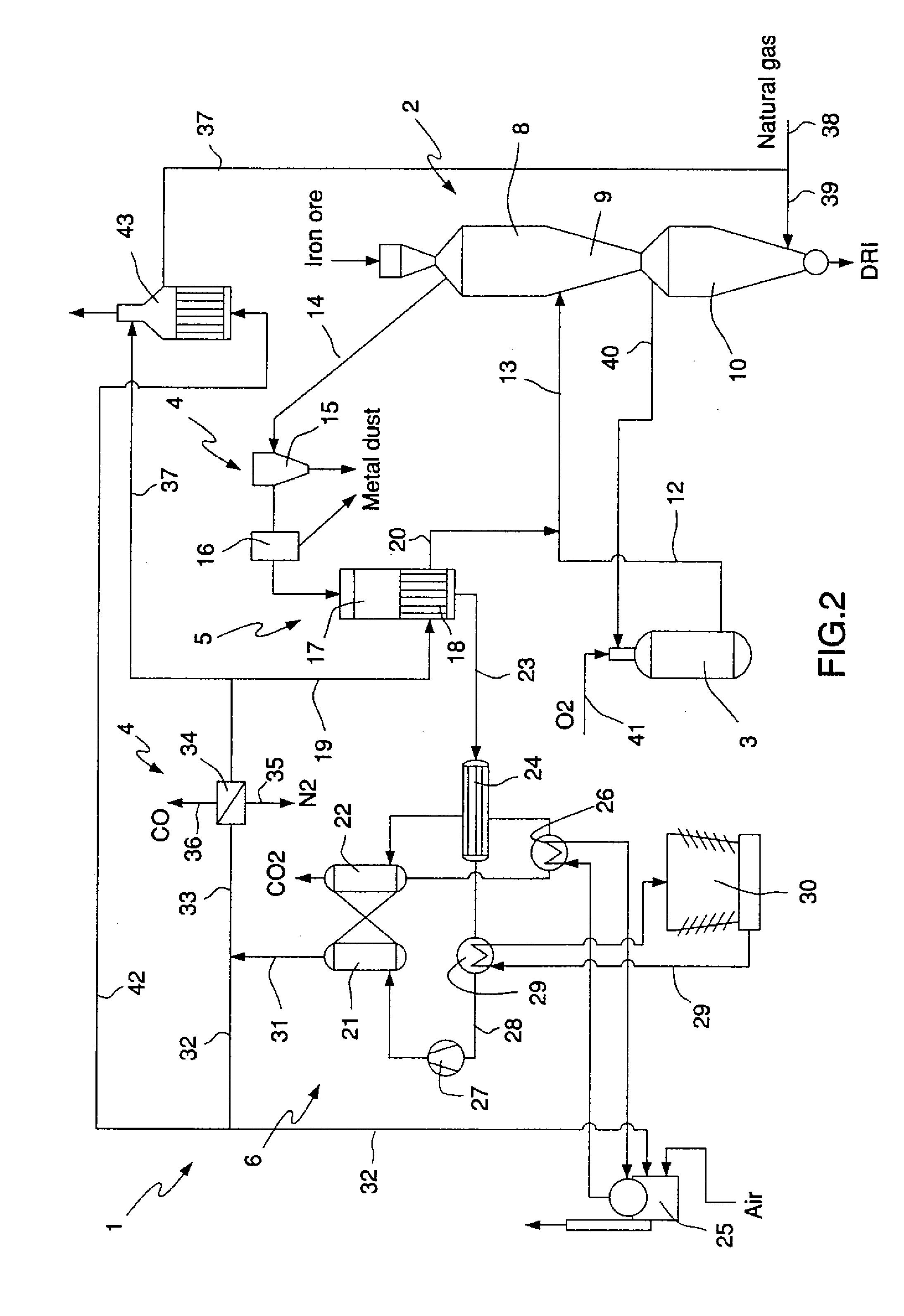Process for production of direct reduced iron
a technology of direct reduction and reduction iron, which is applied in the direction of shaft furnaces, metal processing, furnaces, etc., can solve the problems of uneconomic step and unattractive process, and achieve the effect of improving the reduction properties of the reactor
- Summary
- Abstract
- Description
- Claims
- Application Information
AI Technical Summary
Benefits of technology
Problems solved by technology
Method used
Image
Examples
Embodiment Construction
[0019]Two alternative process schemes are described here below, one with and one without a complementary heater for heating primary reformer effluent high in hydrogen H2. These schemes are shown in FIGS. 1 and 2, respectively.
[0020]With reference to FIG. 1 a first layout of a reduction plant designated by the reference numeral 1 suitable for performing the process according to the present invention is illustrated. In the layout numeral 2 generally represents a direct reduction shaft for production of DRI, 3 represents a gas generator supplying synthesis gas, otherwise known as syngas which is used gas recovered from the reactor and refined to be used as the reducing gas in the reduction shaft, 4 represents a particle cleaning system for separating metal dusting from reactor off gas drawn from the reactor, 5, 6 and 7 represent a reformation system comprising three reformation steps wherein 5 represents a first reformation step for steam reforming carbon monoxide present in the reacto...
PUM
| Property | Measurement | Unit |
|---|---|---|
| temperature | aaaaa | aaaaa |
| temperature | aaaaa | aaaaa |
| temperature | aaaaa | aaaaa |
Abstract
Description
Claims
Application Information
 Login to View More
Login to View More - R&D
- Intellectual Property
- Life Sciences
- Materials
- Tech Scout
- Unparalleled Data Quality
- Higher Quality Content
- 60% Fewer Hallucinations
Browse by: Latest US Patents, China's latest patents, Technical Efficacy Thesaurus, Application Domain, Technology Topic, Popular Technical Reports.
© 2025 PatSnap. All rights reserved.Legal|Privacy policy|Modern Slavery Act Transparency Statement|Sitemap|About US| Contact US: help@patsnap.com


